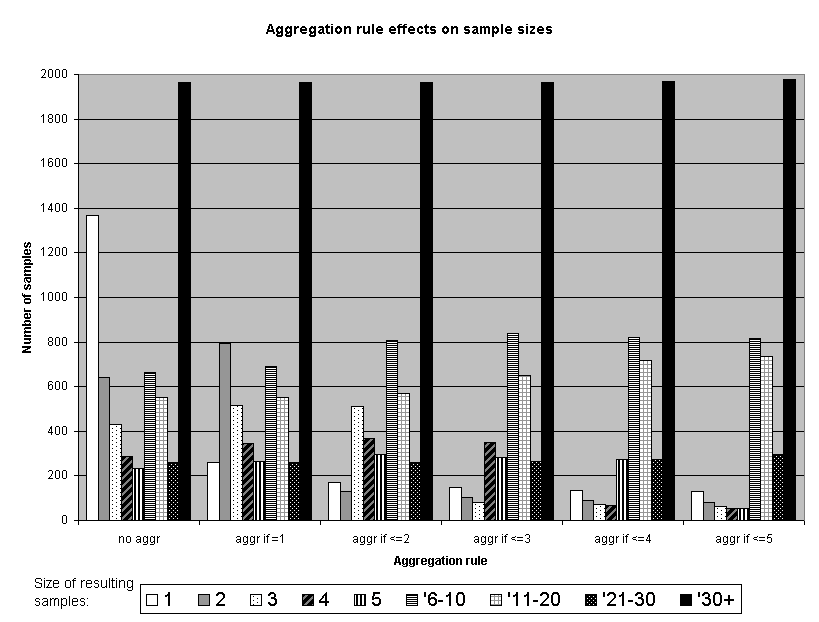Implemented Aggregation Rule Results
Aggregation Rule Proposal Results
This appendix illustrates the effects of the aggregation rules implemented by this Decision. The attached chart shows how the frequency of small samples is diminished as increasingly larger sample sizes are subject to aggregation. For example, all possible aggregations of sample sizes of one reduces the number of sample sizes of one from nearly 1400 samples (see the white bar for the bar cluster labeled "no aggr") to approximately 250 samples (see the white bar for the bar cluster labeled "aggr if = 1"). The bar cluster labeled "aggr if <= 4" represent the final results of the implemented aggregation rules.
These aggregation rules avoid some of the potential pitfalls of the previously proposed rules as discussed in the body of the Decision. First, small sample results are only aggregated with like small sample results, thus minimizing the likelihood that larger sample results will "mask" the small sample results. Second, while small sample failures may still cause non-failing samples to fail when aggregated, the incentive phase of the proceeding can address the problem of potential spurious allocation of incentive payments. Third, unnecessary aggregation is minimized. No small samples are aggregated with large samples as only like-size samples are aggregated. Fourth, since only like-sized small samples are aggregated, there is no ambiguity about which results, aggregated or non-aggregated, should determine results.



